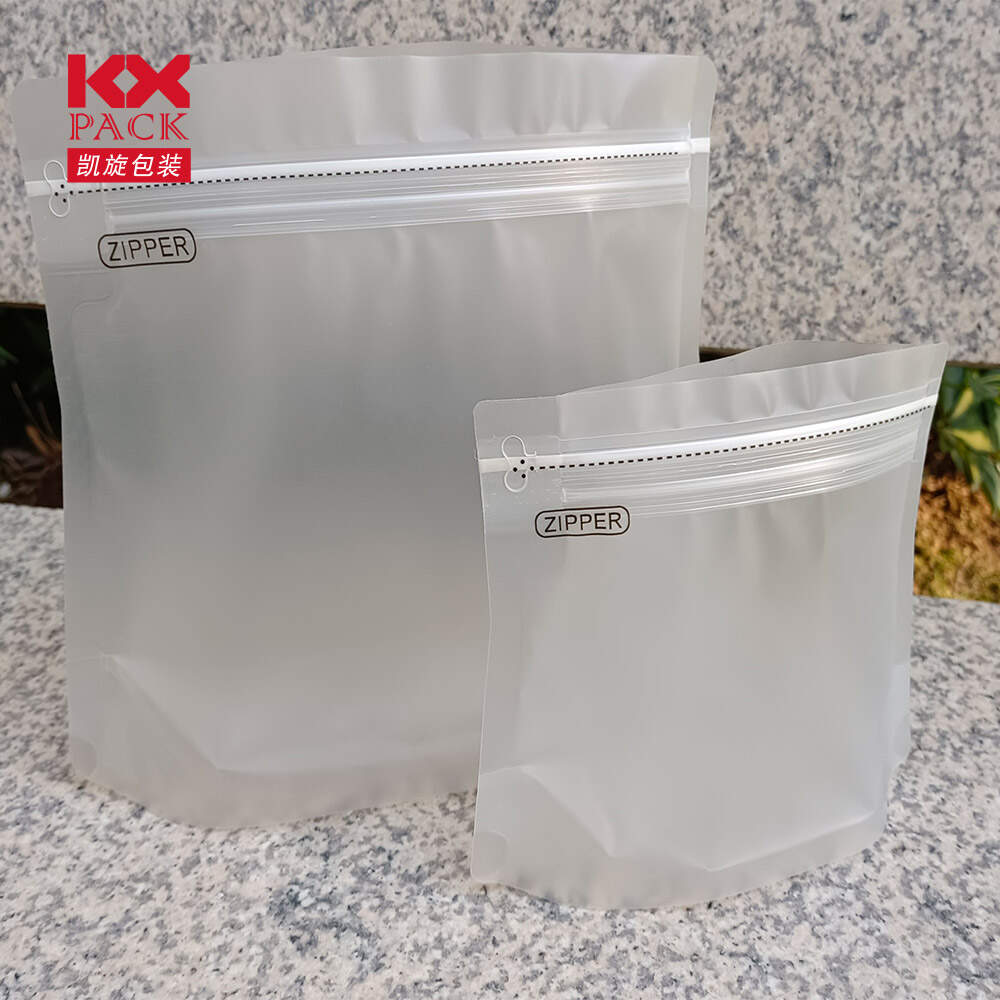Application Scope of Common Plastic Food Packaging
June 09,2022
food grade kraft paper packaging plastic bags
In our daily life, we use a lot of plastic materials to pack our food. Today, we will introduce the application scope of several commonly used plastic food packaging.

Application scope of several commonly used plastic food packaging
- Pet plastics are commonly used to make plastic bottles, drink bottles, and other products. People often buy plastic mineral water bottles and carbonated beverage bottles, which are food-grade safety plastic materials and PET packaging products. Safety hazard: pet is only suitable for normal temperature or cold drinks, not for overheated food. If the temperature is too high, the bottle will release toxic substances, which may cause cancer. If PET bottles are used for a long time, they will automatically release toxic substances. Therefore, plastic beverage bottles should be thrown away immediately after use. Do not use them to keep other foods for too long, so as not to affect your health.
- Polypropylene PP: polypropylene (PP) is one of the most common plastics. It can be made into plastic packaging of any product, such as special plastic bags for food, plastic food boxes, food straws, food plastic parts, etc., which are safe and non-toxic and have good low and high-temperature resistance. Polypropylene is the only plastic that can be heated in a microwave oven, with high strength and folding resistance (50000 times). It will not be damaged at minus 20 degrees. Features: hardness less than 0PP, can be stretched (biaxial stretching) into a triangle, bottom seal, or side seal (letter bag), simple material. The transparency is worse than 0PP.
- High-density polyethylene (HDPE) HDPE has the characteristics of high-temperature resistance, good hardness, high mechanical strength, and chemical corrosion resistance. It is also a non-toxic and safe material, which is usually used to make plastic containers for food. It feels very fragile, so it is often used to make saddle bags. Potential safety hazard: HDPE is not easy to clean and is not recommended to be recycled. It's best not to heat it in a microwave oven.
- Low-density polyethylene (LDPE) low-density polyethylene, soft handle. The product made of it is tasteless, tasteless, non-toxic, and lusterless. Commonly used in food plastic parts, food packaging composite film, food preservation film, medicine, pharmaceutical plastic packaging, etc. Safety hazard: low-density polyethylene has a poor heat resistance and is easy to melt when the temperature exceeds 110 ℃. For example, household food preservative film should not be wrapped in food for heating to avoid the oil in food being easy to dissolve the harmful substances in the film.
Differences between food-grade plastic bags and nonfood grade plastic bags
- Raw materials are the biggest difference! Polyethylene is non-toxic and tasteless! Only using polyethylene to produce plastic bags is very safe in use! But if customers want to reduce costs and businesses want to make money, they will add filling and recycled materials to raw materials! Therefore, whether it is a new material, that is, pure raw material, is the biggest difference between food bags and nonfood grade plastic bags!
- Production environment! Plastic bags for food need a nearly dust-free environment to produce, to ensure the eligibility of products! Therefore, there is a high standard for the production environment! There are no strict regulations for nonfood plastic bags!
- Food-grade plastic bags have a strict inspection system and perfect after-sales service!
Searching for a food grade kraft paper bags, food grade packaging bags, food grade plastic bags, manufacturer from China, you can get high-quality products at a nice price.